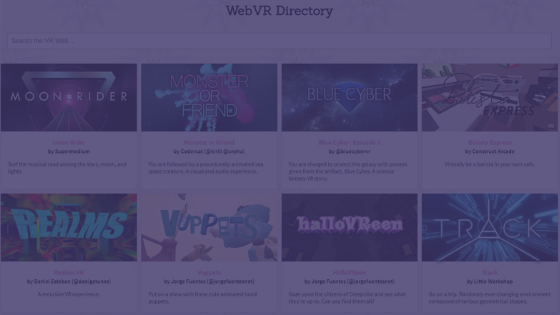The “World Wide Web” earned mainstream attention in the early 90’s and has become the ubiquitous information network of today. AOL, Internet Explorer, Chrome, just to name a few popular browsers, have enjoyed periods of market share when it comes to portals for people accessing the internet. Google is not just a company but also a word in the dictionary that means “to use the Google search engine to obtain information about (someone or something) on the World Wide Web”. Web pages store practically all information that the world has ever know with unprecedented amounts of data added every second.
What started with basic text websites has evolved into full HD video libraries, downloadable books, pictures, forums, banking hubs, news repositories, and more. The internet is accessible from practically everywhere on Earth using a variety of tools from computers to phones to TV’s to appliances and now Virtual Reality headsets.
WebVR is “an open specification that makes it possible to experience VR in your browser. The goal is to make it easier for everyone to get into VR experiences, no matter what device you have.”
Virtual Reality accessed via a web browser allows users to experience fully interactive games and or experiences, with 6DoF controller support, quickly and easily. hubs by Mozilla is a great example of multi-user WebVR
The level of fidelity and immersion in these simple yet intuitive VR experiences is impressive, especially when considering that there are no downloads or powerful gaming PC’s running the software – it’s all hosted on the cloud.

For a great overview of WebXR, please listen to the below episode of Voices of VR Podcast featuring subject-matter expert Trevor Flowers.



